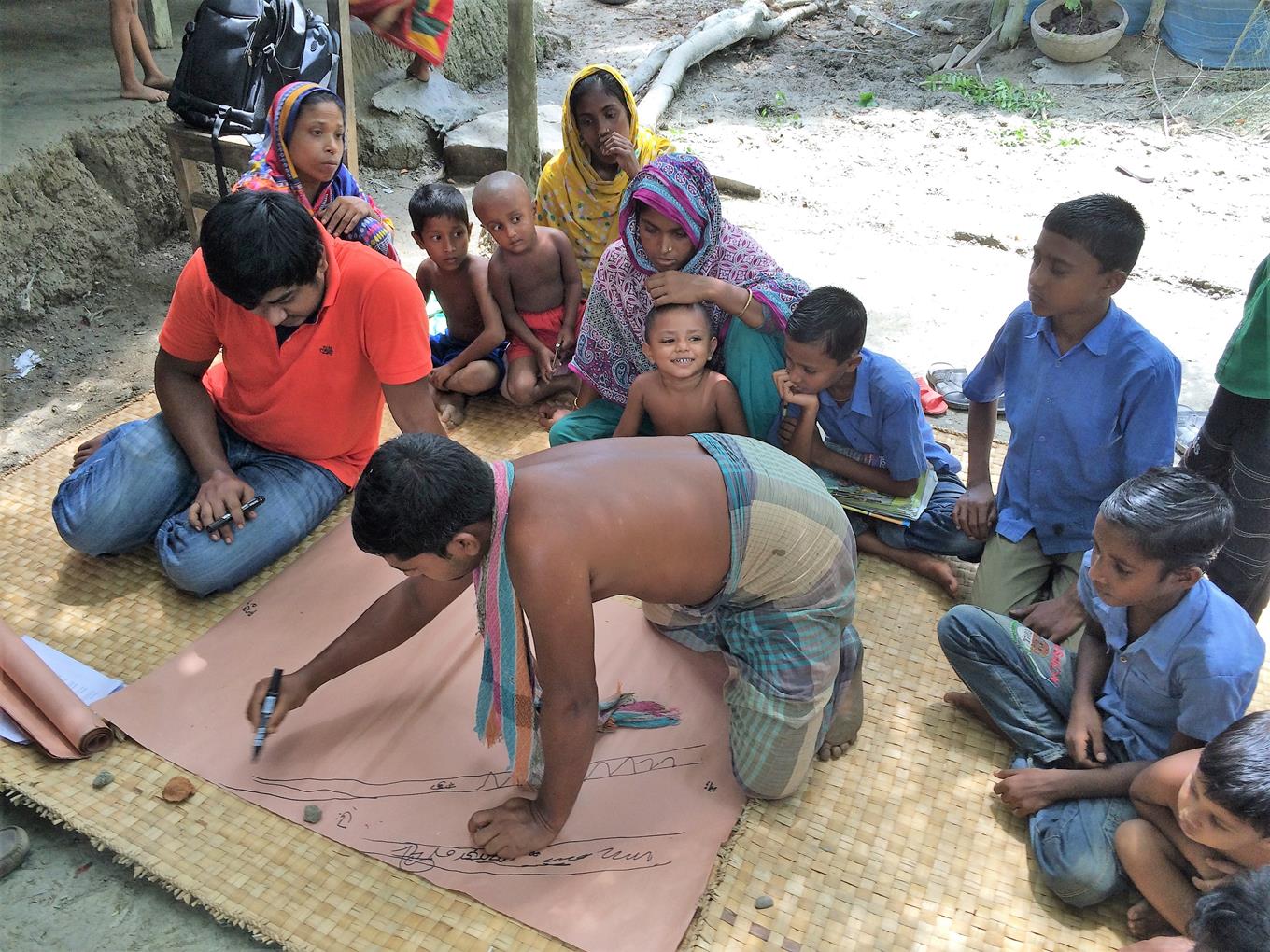Understanding the burden, context and outcomes of drowning in Bangladesh
Case Study
Country: Bangladesh
Author: Dr Jagnoor Jagnoor
Organisations: The George Institute for Global Health, The Centre for Injury Prevention and Research, Bangladesh (CIPRB), Royal National Lifeboat Institution (RNLI)
Aims
To document the burden, context and outcomes of fatal and non-fatal drowning on a population level in the Barisal division of Bangladesh.
Background
In 2005, the Bangladesh Health and Injury Survey (BHIS) revealed drowning to be the leading cause of death for children aged 1-17 years in Bangladesh, with approximately 18,000 children dying each year. Adults are also vulnerable to drowning, particularly fisherman and those using water transportation, such as ferries and launches.
The Barisal division is a highly riverine area where several large rivers converge, situated in the central southern region of Bangladesh. The entire division is affected by water related hazards and natural disasters. Although drowning rates are anticipated to be high in the Barisal division, it is unclear who is at greatest risk of drowning or what drowning prevention activities would be most effective in this context.
Project/Intervention
A population based survey was conducted across 95,124 households across all districts of the Barisal division. Trained data collectors used structured questionnaires to collect information on demographic characteristics of household members and to document past injuries experienced through face-to-face interviews. All drowning events reported were investigated in greater detail, with information collected on event context, on treatment sought, and on resulting health outcomes. A context specific working definition for non-fatal drowning was developed through collaboration with local investigators. Further, a disability assessment tool developed by the World Health Organization (WHODAS 2.0) was incorporated into the survey to investigate disability resulting from non-fatal drowning up to 2 years post event. Survey data was entered electronically into hand-held tablets at the time of data collection and uploaded onto an online electronic data capture system.
Results/Impact/Outcomes
Results of the household survey showed drowning rates in the Barisal division to be to be 3 times higher than the national average for Bangladesh. The mortality burden for drowning was highest in children aged 1-4 years followed by 5-9 years, with drowning rates higher in males and in rural populations. The majority of reported drowning events occurred in the community, with most happening within 100 meters of households for all ages. The most common time for fatal drowning events was between noon and 3pm. Of all non-fatal drowning cases, 20% sought health consultation post drowning event.
The data collection process highlighted some of the challenges with large scale rapid community surveys but also the value of live data collection and the need for robust tools for collecting data on non-fatal injuries in low- and middle-income countries (LMICs). Research findings highlight the need for improved water safety skills among children and improved child supervision practices for the effective reduction of drowning in the Barisal Division.
Challenges
One of the major advancements of the project was the use of an electronic data capture system to enter and upload real-time survey data on hand-held tablets during household visits. Due to issues with the availability and speed of internet connection in rural communities and the large number of data collectors simultaneously uploading survey responses, some survey data uploads were unsuccessful and therefore, data was lost. This resulted in the re-surveying of a number of households being required.
The costs associated with drowning are challenging to document in LMICs. In these settings, health systems are not well equipped for managing non-fatal drowning, while the high burden of drowning among children causes loss of income to be low. The major costs directly attributable to drowning are associated with last rites and burial.
Increased engagement with local stakeholders during early project planning stages would have facilitated support for the needs assessment and for future implementation studies planned as part of the project. Co-designing components of the project with meso and micro level stakeholders may have led to a greater research impact.
Lessons learned
• It is important to thoroughly assess what infrastructure is available prior to introducing any kind of digital programs for research purposes
• Establishing partnerships with relevant stakeholders during inception phases of a project leads to better research outcomes and greater research impact
• It is crucial to establish well-defined co-governance Terms of Reference (TOR) between collaborators
Replicability
The overall methods used for this project would be highly replicable in other high, middle and low-income settings.
Step 1
Assess the situation
